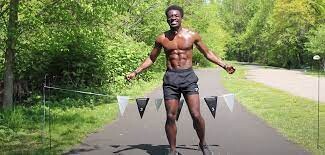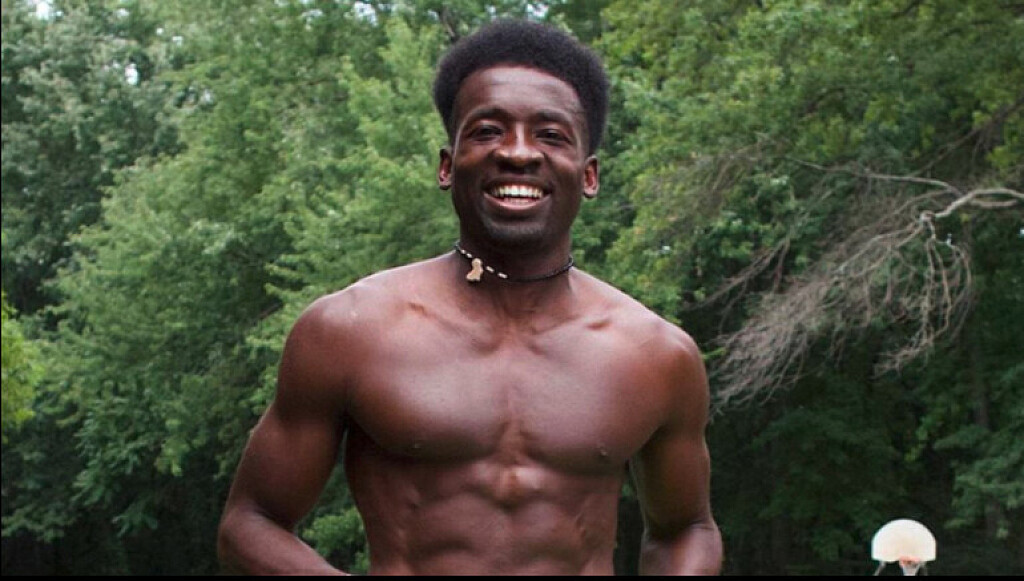Running News Daily
Running News Daily is edited by Bob Anderson. Send your news items to bob@mybestruns.com Advertising opportunities available. Train the Kenyan Way at KATA Kenya and Portugal owned and operated by Bob Anderson. Be sure to catch our movie A Long Run the movie KATA Running Camps and KATA Potato Farms - 31 now open in Kenya! https://kata.ke/
Index to Daily Posts · Sign Up For Updates · Run The World Feed
Hellah Sidibe Runs Frustration into the Ground
The former soccer phenom was burnt out and angry. Then he started running every day, no matter what.
Hellah Sidibe shared his story with producer Sarah Vitak for an episode of The Daily Rally podcast. It was edited for length and clarity.

I went into this dark area in life where I was just mad. Why is this happening to me?
It all came down to, all right, I’m pissed at everything, but let me stop making excuses. Just look at myself, and just deal with what I can handle, what I’m in control of. That’s how it started.
My full name is Hellah Sidibe, but I have a nickname: Hellah Good. I got that nickname back in college. I played Division I soccer. Every time I would take the ball and start sprinting down the line, they’d just say, oh, he’s Hellah good.
Growing up in Mali, West Africa, soccer was the number one sport. We just loved playing, and we loved watching the top players on TV. We were trying to play like them: we were trying to score goals and celebrate the way they do.
We lived in an area where there’s dirt, so we would use our feet to trace and make marks. You would literally make the whole soccer field. In order to still see the line, we would go into our kitchens. When we make food, we make food with wood and charcoal. Everybody would fill that up in a can from their house and bring it to the field. The path that we created with our feet, we’d spray that chalky gray-white powder along those lines so it looked like the white soccer lines.
We’d pick teams. Say: you’re Brazil, you’re Argentina. We’d always take the South American teams because they were the best in the world at the time, when I was young. We would pick players, and we would be like, you’re Thierry Henry, you’re Luís Figo. I’d say, I’m Ronaldo Nazário. Sometimes you’d just paint their numbers on your back, on your bare skin.
We would recruit our own team within the neighborhood. The next neighborhood was within a five-minute walk, and we’d go play them. Their neighborhood we would call allez, which is away. And there was no pressure. We did it because we wanted to, and no one was yelling at us.
When I came to the U.S., it got a little competitive. There started being consequences. If you didn’t do something right, the punishment was: let’s make you run. So I got to college, and it added more to that because I was playing under a coach. His mindset was that we might not be the most skillful team in the country, but we’re gonna be the fittest team in the country. It was to a point in that sometimes the track team would joke around and say, are you guys with the UMass track team or the soccer team? Because whenever they went by the field, they’d see us just huffing and puffing.
So I started hating running. I would cramp up in my calves, my lungs would be burning, and my hamstrings would be on fire. I started having a fear of it. It wasn’t a fear where I hated the game, but it was fear of going to practice for that specific reason. You’re getting yelled at like it’s not enough, even though you feel like you’re giving your absolute best.
Out of almost 400 players, I was one of 20 picked up to face the US youth national team. All of those teams were after me: phone calls from teams, telling me, we want this player. We like his skillset. I was approached by Sporting Kansas City my senior year, and they were one of the top teams in the MLS and won the MLS Cup the year that I finished college.
I was told: you’re gonna get picked up in the draft.
There were domestic roster spots and international roster spot at the time. I don’t know if that’s changed; I haven’t really looked into it. It was the rule that only eight international players could be picked up per team, and the rest had to be domestic players.
The assistant coach at Sporting Kansas City was like, hey Hellah, I’m sorry to tell you this, but the reality is right now. We’d rather have a young player that is a U.S. citizen that’s not as talented as you, but we can develop them and we don’t have to worry about the paperwork side of it. But also we can pick up a big European player that can sell jerseys and tickets that can take the spot. Versus, I’m somebody who hasn’t made a name for himself.
He was just telling me the reality. It wasn’t even his decision.
Just seeing that—it is frustrating, and it’s tough. Your goal is to play the game that you love, and it’s getting pulled away from you.
I just started hating everything. I’m not a doctor, but I do think there was some depression looking back. When you’re in that spot, nothing matters. Someone could smile at you or could even want to hug you, and you want nothing to do with that.
It was a looking-at-myself-in-a-mirror moment. What can you do with yourself right now? What are you in control of? I literally had that conversation with myself. Being an athlete, you always fall back on your physical ability because it makes you feel a certain way mentally. You like challenging yourself. You like competing on the field.
I was just like, what are you gonna do now? You tell yourself you’re going to go to the gym every day for a week, and you can’t even last three days. Do something, and hold yourself accountable for once. Be consistent.
So that is what led me in 2017 to when I said, what is a fear of mine that I wanna face? And running was the first thing that hit my mind.
It was a two-week goal of ten minutes a day within the first week. I didn’t care about distance. It was time. I would just start my watch, and then after ten minutes I’d be done, so I’d be just over a mile.
The ten-minute goal wasn’t because I couldn’t do more than ten minutes; it was just attainable. I just knew that it wasn’t so much where I was going to hate it.
That didn’t last more than a week. Even within the first week, I was going as far as four miles, which is way longer than ten minutes. But I would get lost in it. It wasn’t about pace or distance or anything. It was about just being out there in the present moment.
I ran every day for two weeks. And then I said, I don’t want to get ahead of myself, but I can see myself doing this for the rest of my life. Let me do it every day for a year.
And now we’re here, running every day for 1,989 consecutive days. About to hit 2,000 consecutive days. And running across the U.S., doing a hundred-mile race, and still loving it like day one.
When things aren’t necessarily working out in life, it does mean it’s the end of you. It just means that it’s preparing you for something even greater. You just have to focus on what you can control and keep putting one foot in front of the other. Right now, I would not trade this for anything. Nope, I would not.
Hellah Sidibe is a runner, speaker, and content creator. He has run for more than 2,000 consecutive days. In 2021, he ran across the United States. In September of 2022, he competed in the Leadville Trail 100 Ultra Marathon. You can learn more about him at hellahgood.com.
by Outside On Line
Login to leave a comment




